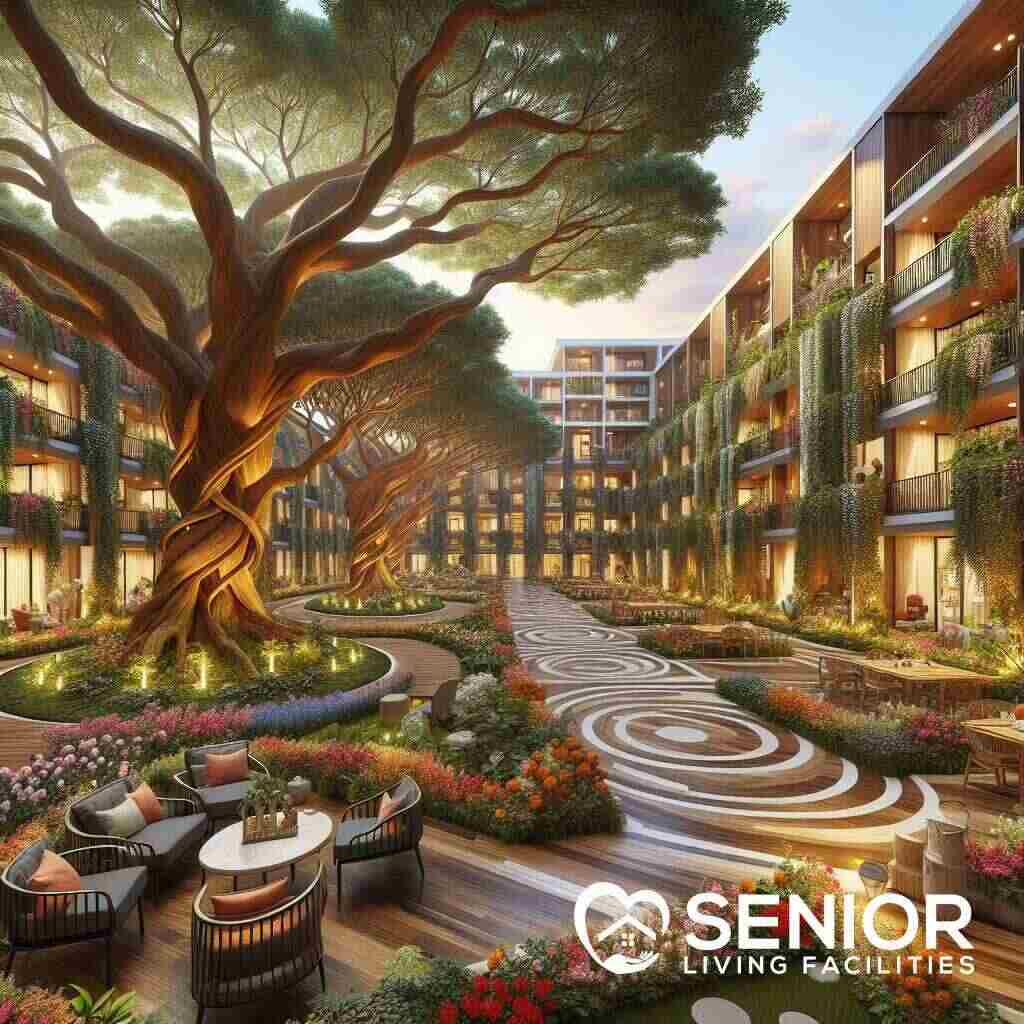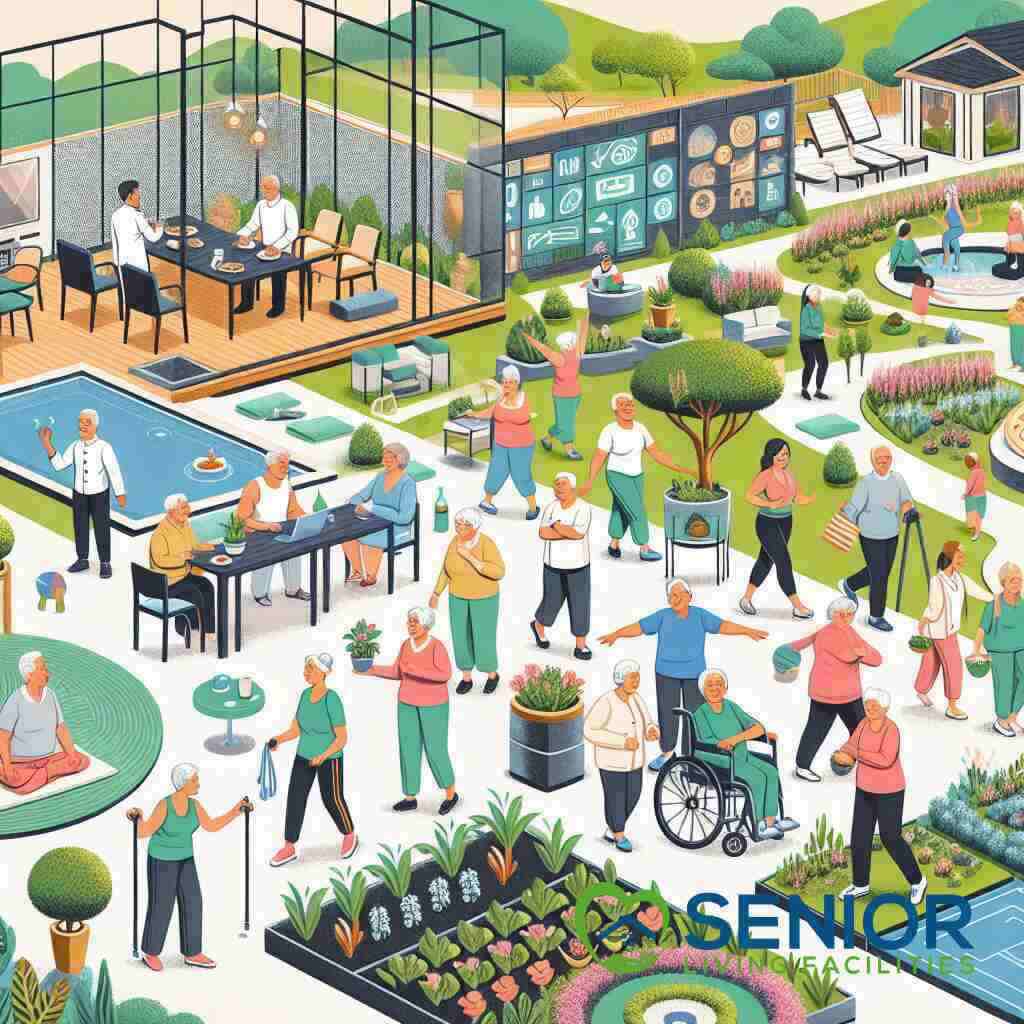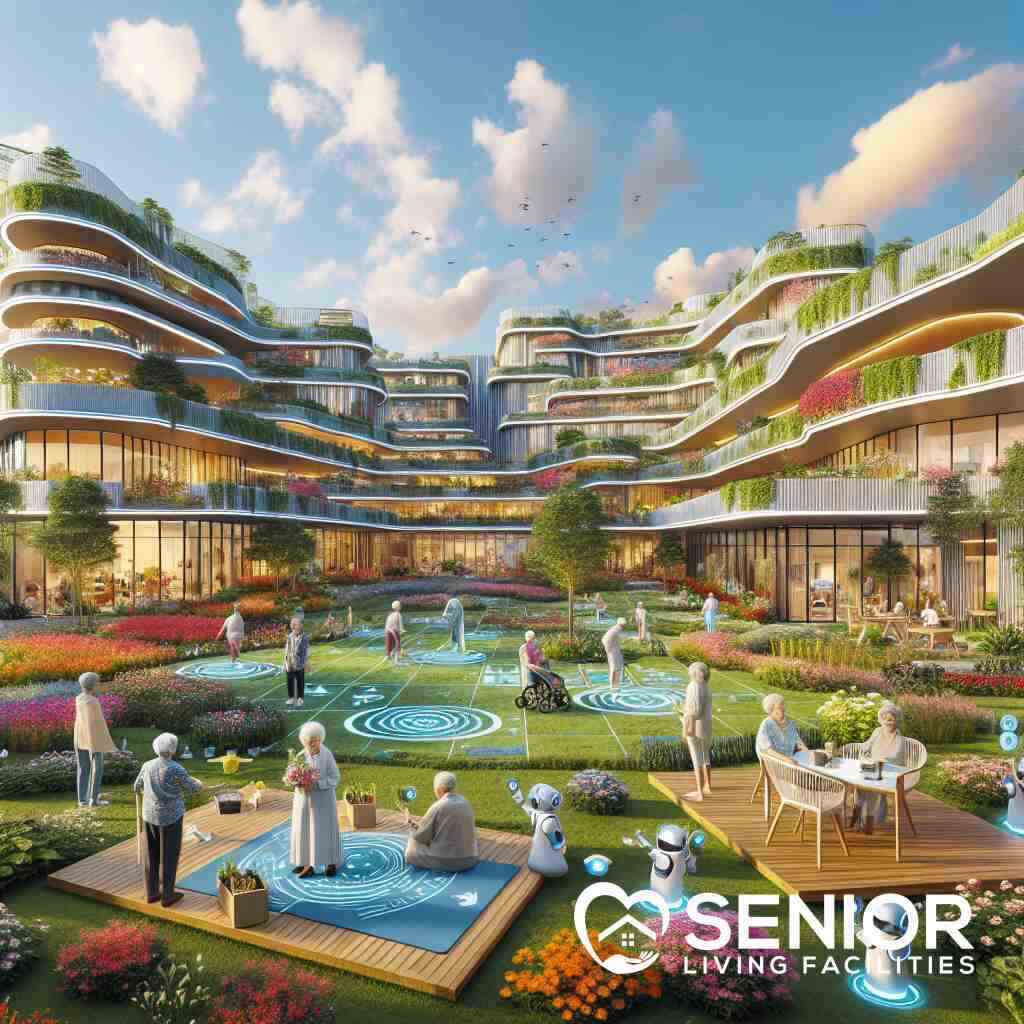
What Is Assisted Living Exactly A Clear Explanation
March 18, 2024
Unveiling Assisted Living: A Comprehensive Overview
Defining Assisted Living
Assisted living is a senior care option that balances independence with assistance in daily living activities. It’s designed for individuals who require additional help with daily tasks such as bathing, dressing, and medication management, but do not need the intensive medical and nursing care provided in a nursing home. The essence of assisted living is to offer a safe, supportive environment for seniors to live as independently as possible, while ensuring that help is available when needed. This blend of assistance and autonomy makes assisted living an attractive option for many seniors and their families, as it caters to those who wish to maintain a sense of independence, while still having access to the assistance they need.
Assisted Living vs Nursing Home: Understanding the Differences
When comparing assisted living vs nursing home care, it’s crucial to understand that although both provide supportive environments for the elderly, the level of care and the type of services offered differ significantly. Nursing homes, also known as skilled nursing facilities, are designed for individuals who require 24-hour medical supervision and assistance with every aspect of daily life, due to physical or mental conditions that render them dependent. On the other hand, assisted living facilities focus on providing assistance with daily living activities while promoting as much independence as possible. Assisted living facilities often offer a more residential-like environment, with private or semi-private apartments and a broader range of social activities to encourage community engagement among residents. This distinction highlights the adaptability of assisted living to cater to seniors who need support but not the extensive care that nursing homes provide.
The Evolution of Assisted Living Facilities
The concept of assisted living has evolved significantly over the years to meet the changing needs and preferences of the senior population. Initially, options for seniors requiring some level of assistance were limited to nursing homes or family care. However, the demand for a more independent style of living where seniors could receive the necessary support without sacrificing their autonomy led to the development of assisted living facilities. These communities have grown to offer a diverse range of services, accommodations, and amenities, all aimed at providing a quality living experience that respects the individuality of each resident. Today, assisted living facilities continue to evolve, integrating technology and adapting to the latest healthcare trends to offer personalized care and enhance the quality of life for seniors. This evolution signifies a shift towards more resident-centered care models that prioritize the well-being and preferences of seniors in every aspect of their living experience.
Services and Care in Assisted Living
Daily Living Assistance and Personal Care
Assisted living facilities offer a wide range of services designed to help residents manage their daily lives with dignity and ease. From assistance with activities of daily living (ADLs) such as bathing, dressing, and grooming, to more personalized care tailored to individual needs, these communities ensure seniors receive the support they require. The daily living assistance provided is not just about the tasks themselves, it’s about promoting independence and enabling residents to lead a fulfilling life. Staff members are trained to offer help in a respectful manner, encouraging residents to do as much as they can on their own, thereby enhancing their sense of autonomy.
Medication Management in Assisted Living
One of the critical services provided in assisted living communities is medication management. This service underscores the importance of ensuring that residents take their prescribed medications accurately and on time. The staff at the facility work closely with healthcare providers to manage and administer medications, reducing the risk of medication errors. This aspect of care is particularly important for seniors who may have complex medication schedules or those who might forget to take their medications. The medication management in assisted living service offers peace of mind to both residents and their families, knowing that the health and safety of the seniors are in capable hands.
Nutrition and Dining in Assisted Living
Assisted living communities place a strong emphasis on nutrition and dining, recognizing that a balanced diet is crucial for seniors’ overall well-being. Most facilities offer a variety of meal plans and dietary options to cater to residents’ specific health needs, preferences, and dietary restrictions. Meals are prepared by professional chefs and are designed to be both nutritious and appealing. Nutrition and dining in assisted living also serve as social events, providing residents with opportunities to interact and bond over meals. This approach not only addresses the nutritional needs of seniors but also enhances their social life, contributing to a more enjoyable and fulfilling living experience.
Professional Caregiving Services
Professional caregiving services in assisted living facilities are a cornerstone of the support provided to seniors. These services range from basic supervision and assistance to more comprehensive care for residents who need higher levels of support. The staff includes trained caregivers, nurses, and sometimes even on-site medical professionals. They work together to deliver personalized care that respects the dignity and individuality of each resident. Through professional caregiving services, assisted living communities create a supportive environment where seniors can thrive while having their health and well-being closely monitored. This comprehensive approach to care ensures that residents have access to the assistance they need at any time, day or night.
The Life Inside: Amenities and Activities
Types of Assisted Living Accommodations
Assisted living facilities offer a variation of living spaces designed to meet the diverse preferences and needs of seniors. These accommodations often range from private studio apartments to one-bedroom or two-bedroom options, providing a spectrum of choices to ensure residents feel at home. Not only do these living quarters come equipped with essential amenities such as kitchenettes, private bathrooms, and emergency call systems, but they also offer the flexibility for residents to personalize their spaces with personal belongings and decor. This variety in types of assisted living accommodations supports a key aspect of senior independence-allowing individuals to maintain their personal lifestyle and comfort while having access to assistance and care as needed.
Assisted living communities understand the importance of creating a homely atmosphere where seniors can thrive in an environment that feels familiar and secure. By offering different types of accommodations, these facilities cater to the unique tastes and needs of each resident, promoting a sense of belonging and well-being. The choice of living space plays a crucial role in the transition to assisted living, as it impacts the resident’s comfort, independence, and overall satisfaction with their living situation.
Safety in Assisted Living Communities
Safety is a paramount concern in assisted living communities. These facilities prioritize creating a secure environment where residents can live without worry, and their families can have peace of mind knowing their loved ones are protected. From physical safety measures such as handrails, grab bars, and emergency alert systems to comprehensive security protocols including 24-hour surveillance and controlled access, safety in assisted living communities is meticulously maintained. Moreover, staff members undergo rigorous training to handle emergency situations and provide immediate assistance whenever necessary.
The emphasis on safety extends beyond physical precautions to include health and wellness monitoring. Regular health check-ups, medication management services, and on-site access to medical professionals ensure that residents’ health needs are promptly and effectively addressed. This holistic approach to safety reassures families that their elderly loved ones are residing in a setting that cares deeply for their well-being.
Social Activities in Assisted Living
Assisted living communities are vibrant places where seniors have ample opportunities to engage in social activities, make new friends, and enjoy an active lifestyle. These communities meticulously plan a wide range of recreational programs and events, from art classes and musical performances to game nights and fitness classes, making every day exciting and fulfilling. Such activities are not only enjoyable but also integral to promoting social interaction, mental stimulation, and physical well-being among residents.
Participation in these social activities helps combat loneliness and isolation, common issues faced by many seniors. Engaging in a community setting encourages residents to form meaningful connections with peers who share similar interests, fostering a sense of camaraderie and belonging. The vibrant social life in assisted living facilities highlights the commitment to enhancing the quality of life for seniors through communal engagement and fun.
Memory Care in Assisted Living
For seniors living with memory-related conditions such as Alzheimer’s disease or other forms of dementia, many assisted living communities offer specialized memory care programs. These programs are tailored to meet the unique needs of individuals with memory impairments, providing a supportive and safe environment that emphasizes routine, familiarity, and personalized care. Memory care in assisted living facilities often feature secure areas to prevent wandering, specialized activities designed to stimulate memory and cognitive function, and staff trained in dementia care techniques.
The goal of memory care is to support residents in maintaining their dignity and independence for as long as possible while ensuring their safety and comfort. Memory care services are designed with a deep understanding of the challenges faced by individuals with memory conditions, offering compassionate care that respects the individuality and preferences of each resident. This specialized approach contributes significantly to the overall well-being of residents, providing families with reassurance that their loved ones are receiving the attentive care they need.
Customization and Personalization

Assisted living facilities have increasingly embraced the concept of personalized care, recognizing that each resident has unique needs, preferences, and health conditions. This section delves into how assisted living communities customize care plans, assist families and individuals in navigating senior housing options, and support the transition to assisted living.
Personalized Care Plans in Assisted Living
Assisted living is not a one-size-fits-all solution. It thrives on personalization, tailored to align with each resident’s specific requirements. Upon entering an assisted living community, a comprehensive assessment is conducted to understand the individual’s medical history, daily living needs, likes, and dislikes. This forms the foundation of a personalized care plan, specifying the level of assistance needed with activities of daily living (ADLs), medication management, and any specialized care requirements.
These care plans are dynamic, adapting to the evolving needs of the resident. Regular meetings with the resident, their family, and the care team ensure that adjustments are made as needed, whether it’s increasing support due to health changes or revising services based on new interests or preferences. This personalization fosters a sense of dignity and independence among residents, knowing their unique needs are recognized and respected.
Navigating Senior Housing Options
Choosing the right senior living solution can be a daunting task for families and individuals. With an array of options available, from independent living to specialized memory care units, it’s crucial to understand the offerings and match them with the needs and preferences of the senior in question.
Navigating these senior housing options involves thorough research, visits to potential communities, and consultations with experts who can provide insights into the best choices. Senior Living Facilities, with its comprehensive database and expert guidance, serves as an invaluable resource in this journey. By simplifying the search process and offering comparisons of various living options, the platform assists families in making informed decisions that align with their loved ones’ desires for a fulfilling, supportive living environment.
Transitioning to Assisted Living: A Guided Journey
Making the move to an assisted living community marks a significant life change for seniors and their families. It involves not just a physical relocation but also emotional adjustments. Preparation, open communication, and support are key to a smooth transition.
Transitioning to assisted living often starts with conversations about the benefits of such a move, addressing any concerns or fears the senior might have. Involving them in the selection process helps in making them feel part of the decision, increasing their comfort level with the change. Before the move, visiting the facility several times can familiarize the senior with their new home and its residents, easing anxiety.
The journey doesn’t end with the move. Assimilating into the community involves participation in social activities, forming connections with fellow residents, and gradually embracing the new lifestyle. Throughout this period, sustained support from family and the assisted living staff is crucial, ensuring the senior feels valued and at home in their new setting.
Through customization and personalization, assisted living facilities play a crucial role in ensuring seniors not only receive the care they need but also live their lives to the fullest, surrounded by support, dignity, and respect.
Understanding the Costs
Assisted Living Costs: An Investment in Quality of Life
Assisted living costs can vary widely based on location, the size of accommodations, and the level of care required. Generally, these costs cover the living space, utilities, meals, daily assistance, and access to amenities and social activities. When considering what assisted living is, it’s essential to view it not merely as an expense but as an investment in enhancing the quality of life for seniors. The comprehensive care, safety measures, and engaging community life that assisted living provides are invaluable. They ensure seniors live in a nurturing environment, contributing to their physical, mental, and social well-being. It’s critical for families to explore various communities, understanding the specifics of what their costs cover to make the best choice for their loved ones.
Financing Options for Assisted Living
Navigating the financial aspect of transitioning to an assisted living facility can be a daunting task. Fortunately, there are multiple financing options available to help manage these expenses. From long-term care insurance policies and reverse mortgages to veterans’ benefits and personal savings, families can tap into various resources to fund assisted living. Some seniors might also be eligible for Medicaid assistance, depending on their state’s regulations and the specific eligibility requirements. Planning ahead and consulting with a financial advisor specialized in elder care can provide guidance on the best financing strategy tailored to an individual’s situation. This proactive approach can ease the financial transition and ensure that seniors receive the care they need without undue financial strain on their families.
Comparing Costs: Assisted Living vs Other Senior Care Options
When evaluating senior care options, it’s important to compare the costs of assisted living with other types of senior care, such as independent living, nursing homes, or in-home care services. Each option serves different needs and comes with its cost structure. Assisted living, for instance, provides a middle ground between independent living and nursing homes, offering a blend of independence along with necessary support services. In comparison, nursing homes may provide comprehensive medical care for those with more severe health conditions, but at a higher cost. On the other hand, in-home care gives seniors the chance to stay in their homes, potentially reducing costs related to housing but possibly increasing expenses for personalized care. Understanding the benefits, limitations, and costs of each option can help families make informed decisions that align with their financial capacity while meeting the care needs of their loved ones.
Choosing the Right Assisted Living Facility
Finding Assisted Living Near Me: A Step-by-Step Guide
When it comes to finding assisted living near me, the process can seem overwhelming, but it doesn’t have to be. The first step is to clearly define the needs and preferences of your loved one. This involves considering the level of care required, the desired location, and any specific amenities or services that are important. Once you have a good understanding of these requirements, begin your search by utilizing a senior living locator tool. Senior Living Facilities offers a comprehensive database of assisted living options across all 50 states, making it easier to find communities that match your criteria.
The next step is to create a shortlist of potential assisted living facilities. Look for communities that not only meet the care needs but also fit the lifestyle and preferences of your loved one. It’s essential to consider factors such as the community’s atmosphere, the staff’s friendliness, and the range of activities offered.
Once you’ve narrowed down your options, schedule visits to each facility. This will give you an opportunity to see the living spaces, meet the staff, and get a feel for the overall environment. It’s also a good time to discuss the available services and care plans in more detail, ensuring they align with your loved one’s needs.
Key Factors to Consider When Choosing an Assisted Living Facility
When choosing an assisted living facility, several key factors should guide your decision. First and foremost, assess the quality of care provided. This includes the staff’s qualifications, the ratio of staff to residents, and how individual care plans are tailored to meet each resident’s needs. It’s also vital to ensure that the facility can accommodate any changes in your loved one’s health and wellness requirements over time.
Another crucial aspect to consider is the living environment. Examine the cleanliness, maintenance, safety, and accessibility of both the private and communal areas. The design and layout of the facility should support your loved one’s independence while ensuring their safety.
The range of amenities and activities offered is also important. Look for assisted living facilities that provide meaningful and engaging activities that resonate with your loved one’s interests. These activities should promote social interaction, physical health, and mental well-being.
Don’t forget to consider the financial aspect. Understand all costs associated with living in the facility, including any additional fees for extra services. It’s crucial to find an option that aligns with your budget without compromising the quality of care or life for your loved one.
Questions to Ask During Your Assisted Living Facility Tour
Taking a tour of an assisted living facility is a crucial step in the selection process. During your visit, it’s essential to ask targeted questions to gather as much information as possible. Inquire about the staff’s qualifications, their approach to resident care, and how they handle emergencies. Questions regarding the ratio of staff to residents during different times of the day can also provide insight into the level of personalized attention your loved one will receive.
Ask about the process for creating and updating personalized care plans. Understanding how the facility accommodates the evolving needs of its residents will ensure that your loved one receives the appropriate level of care at all times.
Inquire about the variety and schedule of activities and social events. It’s important to know how the facility encourages social interaction and keeps residents engaged and fulfilled.
Also, request detailed information on the costs involved, including monthly fees and any additional charges for specific services. Understanding the financial aspects upfront will help prevent any surprises down the line.
Lastly, ask for feedback and experiences from current residents and their families if possible. Their insights can offer invaluable perspectives on living in the community.
The Benefits of Assisted Living: Why It Might Be the Right Choice

Enhanced Quality of Life and Independence
The concept of assisted living is deeply intertwined with the enhancement of seniors’ quality of life and the preservation of their independence. Assisted living facilities are designed to support seniors in living their lives as fully and independently as possible, providing help where needed but also encouraging autonomy. These facilities offer an environment where seniors can thrive, enjoying access to a variety of activities, amenities, and social opportunities that keep them engaged and connected to a community.
The benefits of assisted living also extend to the peace of mind that comes with knowing support is available at any time. From medication management to assistance with daily living activities, the care services in assisted living are personalized to meet the unique needs of each resident. This tailored approach ensures that seniors receive just the right level of support to maintain their independence, dignity, and wellness.
Assisted living facilities often include features designed to make life easier and more enjoyable for residents. From on-site beauty salons and libraries to fitness centers and dining venues, these amenities contribute to an enriched lifestyle. Furthermore, the introduction of technology in assisted living enhances communication, security, and entertainment, further boosting the quality of life for seniors.
Benefits for Families: Peace of Mind and Support
Families of seniors making the transition to assisted living can find tremendous peace of mind in knowing their loved ones are in a safe, supportive, and caring environment. Assisted living facilities offer family members the assurance that their elderly relatives are not only looked after by professional caregivers but also have opportunities to maintain an active and engaging lifestyle.
This peace of mind also stems from the comprehensive security measures in place in these communities, including 24/7 emergency response systems and staff availability. Knowing that there is a team dedicated to their loved one’s well-being at all times alleviates concerns for families, especially if they are unable to provide the necessary level of care themselves.
Additionally, assisted living facilities often provide resources and support for families adjusting to this new chapter in their loved one’s life. Workshops, counseling sessions, and family events are common, fostering a sense of community and inclusivity. This support extends beyond the residents, ensuring families are part of the care process and the larger assisted living community.
Elderly Care Solutions: Comprehensive Benefits of Assisted Living
Assisted living emerges as a holistic elderly care solution, offering a wide array of benefits that address the physical, emotional, and social needs of seniors. By combining residential living with personalized care, assisted living allows seniors to lead fulfilling lives even as their care needs change.
One significant aspect of these facilities is the personalized care planning that ensures each resident’s health, interests, and preferences are catered to. This comprehensive approach to senior care promotes well-being and life satisfaction among residents, as they can enjoy a range of activities, social interactions, and health care services tailored to their individual needs.
Moreover, the adaptable nature of assisted living means that it can serve as a long-term living solution for seniors. The availability of various care levels, from minimal assistance to more comprehensive support, allows for adjustments over time as residents’ needs evolve.
Assisted living stands as a testament to the commitment of caregivers, healthcare professionals, and communities to provide seniors with the best possible lifestyle. Through this supportive living arrangement, families can rest assured that their elderly loved ones are receiving holistic care that prioritizes their quality of life, health, and happiness.
Embarking on the Next Chapter
Preparing for the Move to Assisted Living
The journey to assisted living marks a significant transition in a senior’s life, one that encompasses much more than the mere shifting of a living space. It’s a transition that promises a blend of autonomy and care, tailored to enrich their golden years. As such, preparing for the move to an assisted living facility involves several key steps, ensuring that seniors and their families face this new chapter with confidence and ease.
Initially, it’s crucial to engage in open dialogues about the move, addressing any concerns or expectations. Understanding the emotions surrounding this change allows families to offer better support. Itemizing possessions and deciding what to bring can be a poignant process, prioritize items that hold sentimental value or contribute to a sense of home. Legal and financial preparations should not be overlooked, ensuring all necessary documents are in order.
Moreover, familiarizing oneself with the specific assisted living community ahead of time can ease anxieties. Exploring the facility’s resources, understanding the services provided, and meeting staff and residents can forge a comforting sense of familiarity even before the move.
Creating a Home Away from Home
Transforming an assisted living apartment into a ‘home away from home’ is an essential step toward ensuring comfort and happiness in a new living environment. Personalization plays a critical role in this process. Bringing along cherished belongings, photographs, and familiar pieces of furniture can significantly contribute to creating a warm, personalized space.
Assisted living facilities, recognizing the importance of personalization, often allow residents to customize their living spaces to a considerable extent. The goal is to strike a balance between safety, functionality, and personal taste. Incorporating favorite colors, patterns, or themes in the decor can evoke a sense of belonging. Equally, small changes, like arranging furniture in a familiar layout or having a favorite plant in the room, can make a big difference in how ‘at home’ a resident feels.
Building New Connections and Embracing Community Life
Assisted living communities are vibrant hubs of activity designed to foster social connections and stimulate engagement. For seniors, building new connections and embracing community life can significantly enhance their quality of life. The array of social activities, from group exercises and art classes to communal dining and cultural excursions, provides ample opportunity for residents to connect with their peers.
Becoming an active participant in the community activities can transform the assisted living experience. It’s not just about filling one’s day with things to do but about forming meaningful relationships, finding shared interests, and experiencing the joy of new friendships. Community life in assisted living fosters a sense of belonging, helping seniors feel part of a supportive and lively community.
For families and the seniors themselves, the move to assisted living signifies more than care-it’s about creating a fulfilling lifestyle amidst a community that values independence, dignity, and social connections. With thoughtful preparation, personalization of space, and engagement in vibrant community life, assisted living can offer a harmonious blend of support and independence tailored to enhance the senior living experience.
Frequently Asked Questions
Question: What sets your assisted living facilities apart from other senior living facilities?
Answer: At Senior Living Facilities, we distinguish ourselves by offering a comprehensive range of personalized care plans in assisted living, tailored specifically to meet the unique needs and preferences of each resident. Unlike other senior living facilities, our communities are designed to enhance the quality of life for seniors through a blend of independence and support. We focus on providing a spectrum of assisted living services, from daily living assistance to professional caregiving services, ensuring that each resident receives the precise level of care required. Furthermore, our communities are equipped with a variety of amenities, from nutrition and dining options to engaging social activities in assisted living, all aimed at promoting a vibrant and fulfilling lifestyle. We believe in supporting not only the residents but also their families, offering peace of mind through the assurance of safety in assisted living communities, and providing resources to help navigate senior housing options effectively.
Question: How do Senior Living Facilities ensure a smooth transition to assisted living for seniors and their families?
Answer: Transitioning to assisted living is a significant life event for seniors and their families, and at Senior Living Facilities, we are committed to making this process as seamless and stress-free as possible. We begin by offering personalized guidance to help families navigate their senior housing options, ensuring that they find the right community for their loved ones. Our team assists in creating tailored care plans, taking into account the individual’s health, preferences, and lifestyle, thereby ensuring a perfect match with the assisted living services offered. We also encourage visits to our communities before the move, allowing families and future residents to familiarize themselves with the environment, meet the staff, and feel at home. Additionally, we provide resources and support for emotional adjustments and practical aspects of moving, from what to bring to establishing a comfortable and personalized living space. At Senior Living Facilities, we ensure that every resident feels welcomed, valued, and supported as they embark on this new chapter in their lives.
Question: In the blog ‘What Is Assisted Living Exactly? A Clear Explanation‘, various aspects of assisted living are covered. How do Senior Living Facilities address the evolving needs of seniors in assisted living?
Answer: Senior Living Facilities recognizes that the needs of seniors can change over time, which is why we are committed to providing flexible and evolved assisted living services. Our communities are structured to quickly and effectively adapt to the varying needs of our residents. This is achieved through regular assessments and the ability to customize personalized care plans in assisted living, ensuring that each resident receives the level of care and support they require at any given time. Whether it’s transitioning from minimal assistance to more comprehensive care, or integrating memory care services for those facing cognitive challenges, our facilities are equipped to address these needs promptly. Furthermore, we incorporate the latest in healthcare innovations and trends in elderly care solutions, including medication management in assisted living and the utilization of technology to enhance the well-being and quality of life for our residents. Our proactive approach allows us to continue providing excellent care that evolves with our residents.
Question: What options are available for financing the cost of assisted living at Senior Living Facilities, and how do you assist families in managing these expenses?
Answer: Understanding and managing the costs of assisted living can indeed be a challenge for many families. At Senior Living Facilities, we offer comprehensive support to help you explore all available financing options for assisted living. This includes assistance with navigating long-term care insurance policies, providing information on reverse mortgages, advising on veterans’ benefits, and discussing the role of personal savings. For eligible seniors, we also offer guidance on Medicaid assistance and how it can be utilized to cover some of the expenses associated with assisted living for seniors. Our dedicated financial advisors are skilled in elder care financing and work closely with families to develop a personalized financial strategy that ensures their loved ones receive the requisite care without undue financial burden. For more information on financial planning and assistance, visit our Financial Planning for Senior Living page. We believe that financial planning is a crucial part of the journey to assisted living, and we are here to make this aspect as smooth and understandable as possible for our families.
Question: How do Senior Living Facilities enhance the social life and mental well-being of residents in their assisted living communities?
Answer: At Senior Living Facilities, we recognize the immense value of a thriving social life and robust mental well-being for our residents. To this end, our assisted living communities are structured to offer an enriching and vibrant lifestyle, filled with a wide array of social activities in assisted living. Our calendar is brimming with engaging events, classes, and clubs, designed to cater to a variety of interests and hobbies. From art and music to physical fitness and cultural excursions, there is something for everyone to enjoy. These activities not only provide entertainment but also facilitate meaningful connections among residents, fostering a strong sense of community and belonging. Our dedicated staff also plays a key role in encouraging participation and ensuring that each resident feels included and valued. Furthermore, our communities offer spaces and amenities that promote social interaction, such as communal dining areas, gardens, and lounges. By prioritizing the social and mental wellness of our residents, Senior Living Facilities aims to create a supportive and stimulating environment where seniors can thrive and live their lives to the fullest.


